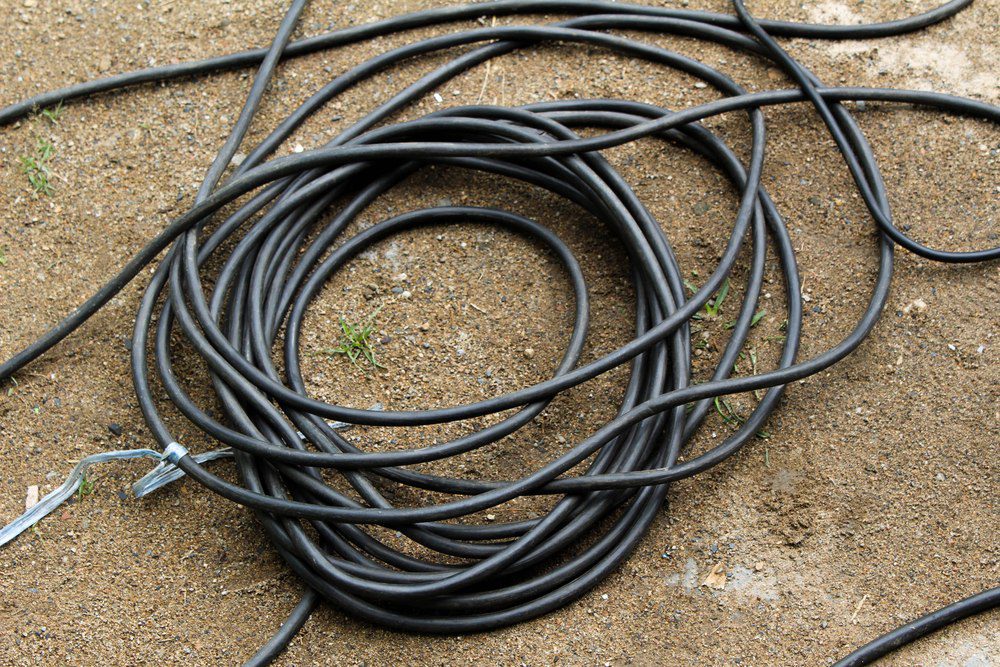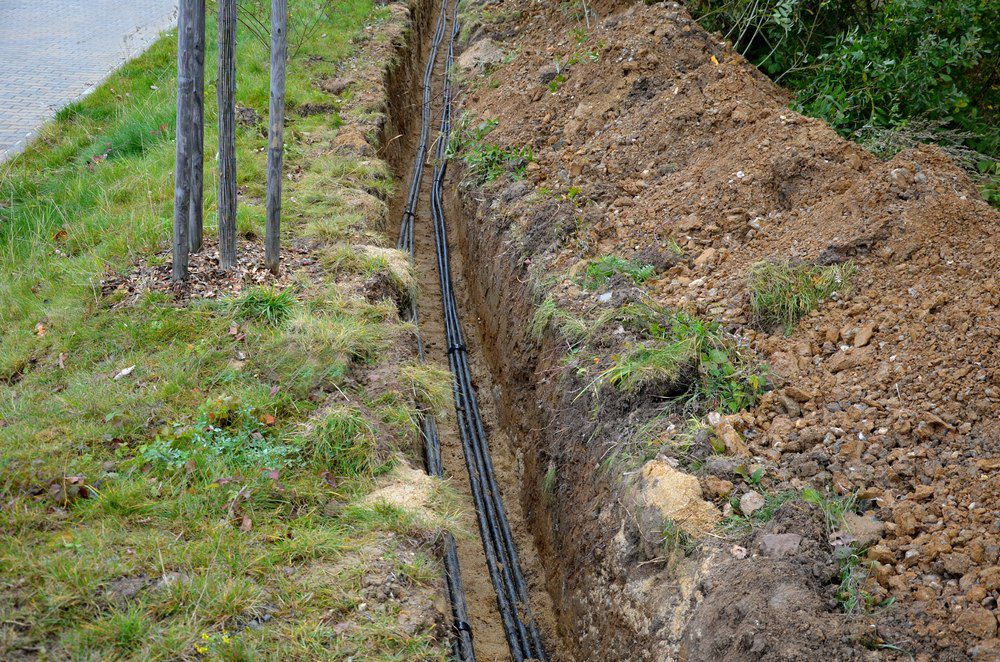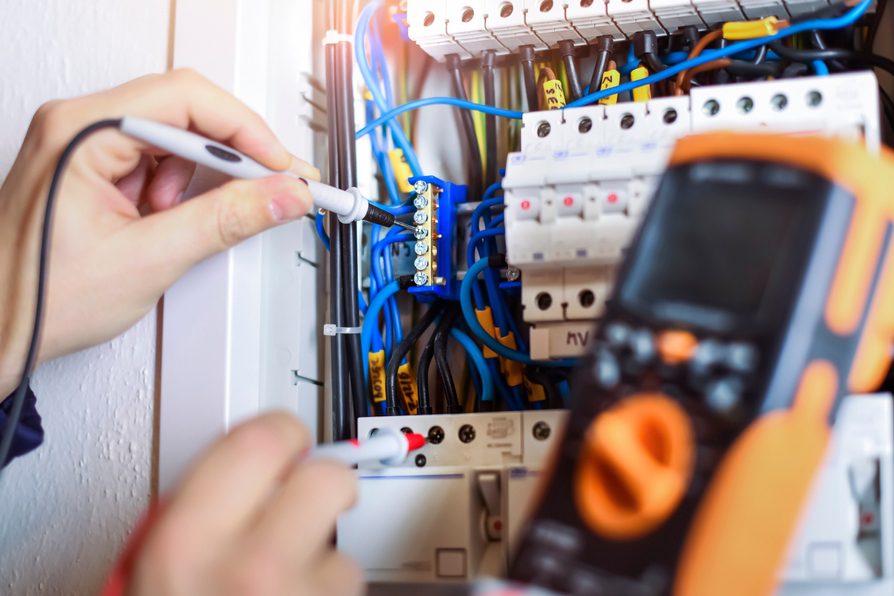
Most areas still have many overhead wires that power homes and businesses. These wires and cables must be supported by tall poles situated along roads and in many public spaces. These poles and the connected cables are dangerous as they are live wires and can fall due to storms, vehicle accidents, or tree branch interference.
The solution is to bury wires and cables underground. This increases the safety and reliability of power and the other services provided. Direct burial wires are protected from inclement weather, tree branches, and other physical risks.
Table of Contents
What Are Direct-Burial Underground Cables?
Direct-burial underground cable is a type of electrical wiring that is specifically engineered to withstand the harsh conditions of being buried underground. To provide added protection, the cable is encased in thermoplastic, which creates a moisture-proof barrier between the wiring and the surrounding underground environment.
In some cases, direct-burial wires may not require a conduit, but if one is necessary, the cable can be laid inside for extra protection of the electrical system. Once installed, the direct-burial cable is run through trenches and then buried for maximum safety and effectiveness.
Different Categories of Direct-Burial Cables
There are different categories of direct-burial wire, but the most common are underground service entrance (USE) and undergrounder feeder (UF).
What Are Underground Service Entrance (USE) Cables Used For?
Underground service entrance (USE) cable is black and is usually used on residential projects where lines are buried to bring power from a transformer to homes. These underground wires are traditionally handled by utility professionals rather than being dealt with by the homeowner themselves.
What Are Undergrounder Feeder (UF) Cables Used For?
Undergrounder feeder (UF) cable is gray and is distributed in rolls that look similar to non-metallic (NM) sheathed cable. This type of cable may be used indoors or outdoors. For instance, if a homeowner wishes to send power to a garden shed or a lamppost on the property, they may use UF cable underground running from the house.
As earlier stated, UF cable is similar to standard NM cable. One significant difference between the two cables is their construction. NM cable has wires wrapped with paper and a loose plastic sheath, while UF cable is entirely encased in plastic. This insulates each wire from the others and prevents moisture or other elements from affecting the wires. It is also sunlight-resistant for times when it is used above ground.

Suggestions for Installing Direct-Burial Wires
If you’re installing direct-burial wires, here are a few suggestions to prevent issues:
- Always consult your local building department for specific building and electrical code rules, including how deep the wire must be placed.
- Remember to call the national ‘Call Before You Dig’ helpline. It will inform you of other service lines in your area.
- Rule of thumb: bury UF cables in PVC conduit at least 18 inches deep unless it’s buried directly, then go at least 24 inches deep.
- If your cable must run a long distance, you should calculate for voltage drop. You may need to consider a larger cable.
- Finally, draw a map with permanent reference points to show where you have installed the underground cables. Keep that map safe because you will need to refer to it for future projects or if you sell your home to a new owner.
4 Other Types of Electrical Wiring for Your House
UF and USE are two common types of direct burial wires for your house, but they aren’t the only types of wiring you can use. Here are four other types of electrical wiring:
1. NM Cable
As already mentioned, NM cable is common in residential projects and is also called Romex cable. These cables hold three or more individual conductors, held together in color-coded, flexible, plastic sheathing. These are typically used inside your home for fixtures, switches, appliances, and outlets.
The color-coding lets you know the wire gauge:
- Black: 6-gauge, 55-amp circuits
- Black: 8-gauge, 40-amp circuits
- Orange: 10-gauge, 30-amp circuits
- Yellow: 12-gauge, 20-amp circuits
- White: 14-gauge, 15-amp circuits
- Gray: Underground cable (UF)
2. Armored Cable
Sometimes NM cables are not allowed in some areas, so you may need to use armored cables (AC). These are also known as BX and have flexible metallic sheathing, which gives added protection for the enclosed conductors. However, you can’t use AC cables if your home or commercial structure has more than three stories.
3. Low-Voltage Wires
For circuits using less than 50 volts, you can use low-voltage wire. Thermostats, doorbells, sprinkler systems, or landscape lights are all low-voltage items, varying from 12 to 22-gauge. The wiring may be insulated or come in cable sheathing.
4. THHN/THWN Wire
Among insulated wires, THHN and THWN are two of the most common. They are single conductors with color-coded insulation and protected by a tubular metal or plastic conduit.
The color-coding indicates the following:
- Black, orange, or red mean the wires are hot
- White or brown means the wires are neutral
- Green or yellow-green means the wires are ground wires
These wires can be used inside your home, in garages, basements, or within other short exposed runs.

Electrical Wiring Installation and Repair Services
When it comes to electrical wiring installation and repair projects, it’s best to go with the experts. Be safe and let our team of local electricians in Toms River, NJ and other areas handle your electrical services. We take care of all types of electrical services, from electrical panel replacement, lighting installation, to power outlet replacement.
For your peace of mind, we offer up-front pricing, warranty protection, and our money-back guarantee if you are unsatisfied with the work. Call our team of licensed electricians at (732) 638-4317 to receive assistance with damaged wires or other electrical issues in your house.


